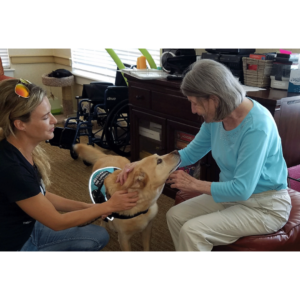EFA 2013: Designing for daily life with dementia
In “Designing for Daily Life with Dementia,” a Monday morning session at the Environments for Aging Conference in New Orleans, the speaker threw out some pretty astonishing statistics to get the ball rolling. According to Lena G. Smith, COO and clinical director for Retreat Healthcare in Albuquerque, by 2050, there will be more than a million 100-year-olds in the U.S. The elderly population in the States will have increased 102 percent between 2000 and 2030. Currently, between 40 and 60 percent of those age 85 and older is estimated to have some form of dementing illness. And every 69 seconds, someone in the U.S. develops Alzheimer’s disease—which is just one form of dementia.
Expand that trend worldwide: In 2001, there were 24.3 million cases of dementia. In 2020, there will be 42.3 million cases. 2040: 81.1 million. There won’t be enough caregivers to take care of all these patients, Smith warns, and that care is going to fall to families.
Smith defined dementia as “a syndrome of acquired intellectual impairment produced by brain dysfunction.” Some of the most difficult behaviors associated with dementia are paranoia, anxiety, fear, wandering, resistance to care, and lack of insight and social appropriateness. Common characteristics include memory loss, language changes, loss of motor activity and sensory functions, and difficulty recognizing objects. While Alzheimer’s represents about half or more of all dementia cases, there are many others, and dementia is a progressive, terminal disease.
The challenge for designers and architects, Smith said, is that you can’t really design for dementia as an overall category. Which dementia are you designing for? Which behaviors are expected? Is it early stage or late stage? Will the resident be there for the full progression of the disease? What’s the intended staffing ratio, so you can design spaces to accommodate everyone? (Often, she said, facilities don’t include enough seating for staff in group spaces, which makes it harder for them to be “care partners.”)
The behaviors exhibited in early-stage dementia residents are very different from late-stage patients, Smith said, and early-stage residents don’t want to be around the behaviors of those at a more advanced progression.
So what can a designer do to be sensitive to all these residents? As with any terminal disease, Smith said, the care provider’s goal—and the goal of the environment, as well—should be for each patient to experience “daily feelings of joy.” She stressed the inclusion of multiple areas of congregation with short walking distances between them. These areas should be different sizes, and be capable of being subdivided as necessary, from one-on-one spaces to accommodations for bigger group activities.
Natural light is very important, as is lighting that helps cue different times of day. If climate allows it, include lots of outdoor areas, including ample outdoor dining space. And, she added, be sure to “design pockets of small moments along the way,” with sensory elements (such as a nook with plants to tend) to facilitate those moments of joy.
For more on this session and the rest of the Environments for Aging Conference, go to www.environmentsforaging.com.
Loved EFA 2013? Or, missed it and wish you hadn’t? Join us for EFA 2014 May 3-6, 2014 in Anaheim! Details to come on www.environmentsforaging.com!
Related Articles
Topics: Articles , Design











